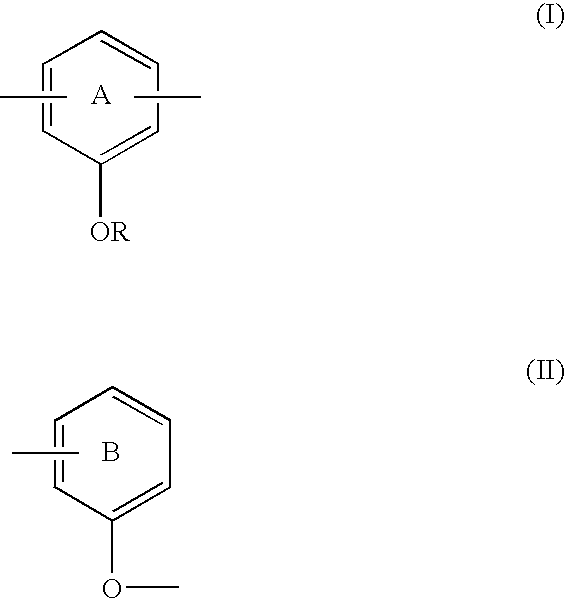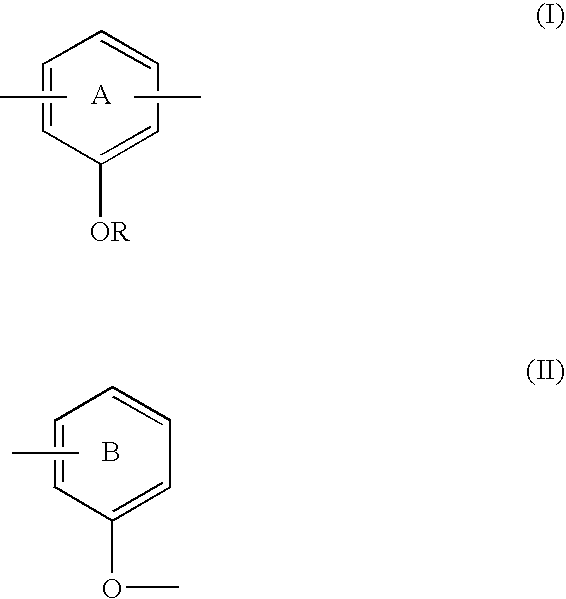Preparation of wires and cables
a technology applied in the field of coating wires and cables, can solve the problems of loss of dielectric strength of insulation, even more solubility, and impair the dielectric properties of polymers,
- Summary
- Abstract
- Description
- Claims
- Application Information
AI Technical Summary
Benefits of technology
Problems solved by technology
Method used
Image
Examples
example 1
Cable Coating Made from HDPE and Phenolic Polymeric Antioxidant
[0032]A high density polyethylene (HDPE) (99 parts by weight, PETROTHENE® L5005, Equistar Chemicals) and a phenolic polymeric antioxidant (1 part by weight, Polnox P6-07, University of Massachusetts, Lowell) are mixed in a Brabender mixer at 170° C. to form a concentrate. The concentrate is let down by the HDPE in an 18″ Leistritz twin screw extruder at 230° C. and 290 rpm to three concentrations: 500, 1,000, and 1,500 ppm. The diluted samples are each pressed into films of 75 mil thickness by compression molding at 370° C. and then cooled in water at 20° C. for 5 minutes and air for 3 minutes.
[0033]Each film is cut to four samples of the same size by a circular die with a diameter of about 0.5 inch; each sample weighs about 7 mg to about 7.5 mg. The twelve samples are divided into two lots; each lot has two samples of the three concentrations: 500 ppm, 1,000 ppm and 1,500 ppm. The first lot of six samples is not aged (u...
example 3
Cable Coating Made from LLDPE and Phenolic Polymeric Antioxidant
[0037]The general procedure of Example 1 is repeated except the HDPE is replaced with a linear low density polyethylene (LLDPE) (99 parts by weight, PETROTHENE® GA808, Equistar Chemicals), and the concentrate is let down with the LLDPE to two concentrations: 1,000 and 2,000 ppm. The average OIT values of the un-aged samples are 37 and 59 minutes for the films containing 1,000 and 2,000 ppm of antioxidant, respectively. The average OIT values of the aged samples are 21 and 48 minutes for the films containing 1,000 and 2,000 ppm of antioxidant, respectively.
example 5
Cable Coating Made from HDPE and Phenolic Polymeric Antioxidant
[0039]The general procedure of Example 2 is repeated except HDPE PETROTHENE® L5005 is replaced with HDPE PETROTHENE® GA808 (product of Equistar Chemicals). The concentrate is let down by GA808 to two concentrations: 1,000 and 2,000 ppm. The average OIT values of the un-aged samples are 26 and 41 for the films containing 1,000 and 2,000 ppm of antioxidant, respectively. The average OIT values of the aged samples are 18 and 33 minutes for the films containing 1,000 and 2,000 ppm of antioxidant, respectively.
PUM
| Property | Measurement | Unit |
|---|---|---|
| Temperature | aaaaa | aaaaa |
| Fraction | aaaaa | aaaaa |
| Fraction | aaaaa | aaaaa |
Abstract
Description
Claims
Application Information
 Login to View More
Login to View More - R&D
- Intellectual Property
- Life Sciences
- Materials
- Tech Scout
- Unparalleled Data Quality
- Higher Quality Content
- 60% Fewer Hallucinations
Browse by: Latest US Patents, China's latest patents, Technical Efficacy Thesaurus, Application Domain, Technology Topic, Popular Technical Reports.
© 2025 PatSnap. All rights reserved.Legal|Privacy policy|Modern Slavery Act Transparency Statement|Sitemap|About US| Contact US: help@patsnap.com



